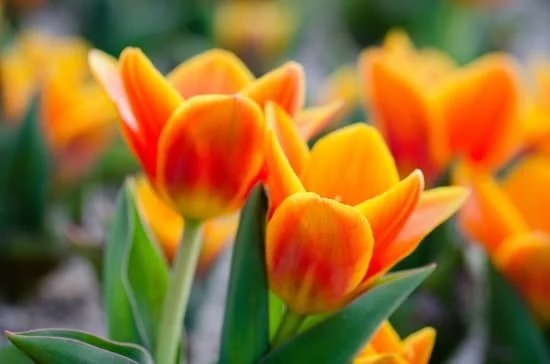Looking for creative vegetable container gardening ideas to make the most of your space? Whether you have a small balcony, patio, or limited yard space, container gardening is a versatile and convenient way to grow your own produce. In this article, we’ll explore the benefits of vegetable container gardening, tips for choosing the right containers and vegetables, as well as maintenance and troubleshooting advice for successful harvests.
Vegetable container gardening is an excellent option for urban dwellers, renters, or anyone with limited outdoor space. With the right containers and plants, you can transform even the smallest area into a thriving vegetable garden. From tomatoes to herbs, there are numerous possibilities for growing fresh produce in containers on your balcony or patio. This article will provide you with all the information needed to get started on your own container garden.
In addition to discussing the basics of vegetable container gardening, we’ll also explore creative ideas for small spaces and offer practical tips for maintaining and troubleshooting common problems that may arise. Whether you’re a novice gardener or have some experience with traditional gardening methods, this article will equip you with the knowledge and inspiration to cultivate a successful vegetable container garden. Ready to enjoy the satisfaction of harvesting your own homegrown vegetables? Read on for expert advice.
Benefits of Vegetable Container Gardening
When it comes to gardening, not everyone has the luxury of a spacious backyard or garden plot. This is where vegetable container gardening comes in. It offers numerous benefits that make it an attractive option for individuals with limited space, making it a great choice for urban dwellers or anyone looking to add some greenery and homegrown produce to their living space.
One of the main benefits of vegetable container gardening is its space-saving nature. You don’t need a large yard or garden plot to get started – just a sunny spot on a balcony, patio, or even by a sunny window will do. This makes it accessible to those living in apartments or homes without outdoor space.
Another advantage is the ability to control the growing environment. Using containers allows you to customize the soil, water, and light conditions for each plant, leading to better growth and healthier vegetables. Additionally, containers can be moved around as needed to optimize sunlight exposure or protect plants from harsh weather conditions.
Furthermore, vegetable container gardening can also be more manageable for those with physical limitations. Tending to plants in containers typically involves less bending and kneeling compared to traditional ground-level gardening, making it easier for individuals with mobility issues to participate in and enjoy the benefits of growing their own vegetables.
Overall, vegetable container gardening offers a convenient and adaptable way to grow your favorite vegetables while maximizing limited space. Whether you’re looking to incorporate more greenery into your living spaces or simply enjoy the satisfaction of harvesting your own fresh produce, there are countless benefits to be gained from this versatile gardening method.
Choosing the Right Containers for Your Vegetables
When it comes to vegetable container gardening, choosing the right containers for your vegetables is crucial for the success of your garden. The type of container you select can have a significant impact on the health and growth of your plants. There are several factors to consider when choosing containers for your vegetables, including size, material, and drainage.
First and foremost, the size of the container is important to take into consideration. Different vegetables require different amounts of space for their root systems to grow. For example, deep-rooted vegetables like tomatoes and peppers will need larger containers, while shallow-rooted vegetables like lettuce and herbs can thrive in smaller pots. It’s essential to research the specific space requirements for each vegetable you plan to grow and choose your containers accordingly.
In addition to size, the material of the container is also an important factor to consider. Plastic, ceramic, terra cotta, and fabric are all common container materials. Each material has its own advantages and disadvantages in terms of weight, insulation, and water retention. It’s essential to choose a material that will provide adequate insulation for your plants’ roots without causing overheating or waterlogging.
Finally, proper drainage is crucial for successful vegetable container gardening. Without adequate drainage, excess water can accumulate at the bottom of the pot, leading to root rot and other moisture-related issues. Be sure that your chosen containers have drainage holes in the bottom to allow excess water to escape.
If you fall in love with a container that doesn’t have drainage holes already drilled into it, fear not. It’s a simple process requiring only minimal tools: all it takes is a special drill bit made specifically for drilling through pottery or ceramic materials available at most hardware stores.
With these considerations in mind as you select your containers, you’ll be well on your way to setting up a thriving vegetable garden in any space – whether it’s a small patio or balcony – using these vegetable container gardening ideas.
Selecting the Best Vegetables for Container Gardening
When it comes to selecting the best vegetables for your container garden, it’s important to consider the size of the plant, its root system, and its light and environmental requirements. Not all vegetables are well-suited for container gardening, so choosing the right ones will set you up for success.
Smaller Plants for Small Spaces
If you have limited space for your container garden, consider growing smaller vegetable plants that don’t require a lot of room to spread out. Vegetables like cherry tomatoes, lettuce, radishes, and chilies are great options for small containers. These plants can thrive in smaller spaces while still producing a bountiful harvest.
Root Vegetables and Deep Containers
For root vegetables like carrots, beets, and potatoes, it’s essential to choose deep containers to accommodate their growing needs. Look for tall pots or specialized deep containers that allow these vegetables to develop fully without being constrained by space. Additionally, ensure that the soil in these containers is loose and well-draining to prevent root rot.
Vining Plants and Vertical Gardening
If you want to grow vining plants like cucumbers, beans, or peas in your vegetable container garden but are limited on horizontal space, consider utilizing vertical gardening techniques. Trellises or cages can be used to support these plants as they grow upwards, maximizing your space while still allowing the plants to flourish.
By carefully selecting the best vegetables for your specific container gardening situation, you’ll set yourself up for a successful and enjoyable gardening experience. With the right plants in the right containers, you can look forward to a plentiful harvest of fresh and delicious home-grown produce.
Tips for Successful Vegetable Container Gardening
When it comes to successful vegetable container gardening, there are a few key tips that can help ensure the health and productivity of your plants. By following these guidelines, you can maximize your yield and enjoy a thriving container garden all season long.
Choose the Right Location
One of the most important factors in successful vegetable container gardening is selecting the right location for your containers. Most vegetables require at least 6-8 hours of sunlight per day, so it’s essential to place your containers in a spot that receives adequate sunlight. Additionally, consider factors such as wind exposure and access to water when choosing the location for your containers.
Use Quality Soil
The soil you use in your vegetable containers plays a crucial role in the health and growth of your plants. Opt for high-quality potting mix that is specifically formulated for container gardening. This type of soil provides proper drainage and essential nutrients for your vegetables to thrive. Avoid using regular garden soil, as it tends to become compacted in containers and may not provide adequate nutrition.
Provide Adequate Watering and Feeding
Proper watering and feeding are essential for successful vegetable container gardening. Be sure to water your plants regularly, ensuring that the soil remains consistently moist but not waterlogged. During the growing season, fertilize your vegetables with a balanced liquid fertilizer every two weeks to provide them with essential nutrients for healthy growth.
By following these tips for successful vegetable container gardening, you can cultivate a bountiful harvest of fresh, homegrown vegetables in even the smallest outdoor spaces. With proper care and attention, container-grown veggies can thrive and provide a rewarding yield throughout the growing season.
Creative Container Ideas for Small Spaces
Container gardening is a great solution for individuals with limited space. Not everyone has access to a large yard or garden, but that shouldn’t stop them from growing their own vegetables. Here are some creative container ideas for small spaces that will allow you to enjoy the benefits of vegetable gardening, even in a confined area.
When it comes to vegetable container gardening ideas for small spaces, think outside the box – or rather, outside the traditional planters. Look for unconventional items around your home that can be repurposed as containers, such as old buckets, tin cans, or wooden crates. These can add a unique and charming touch to your garden while also serving as functional planters.
Vertical gardening is another innovative idea for small spaces. Utilize vertical space by installing hanging planters or creating a trellis system for vining vegetables like tomatoes, cucumbers, and peas. This not only maximizes space but also adds visual interest to your garden.
For those with even less space to spare, consider a windowsill garden. Compact herb and vegetable varieties like cherry tomatoes, lettuce, and chives can thrive in small pots placed on a sunny windowsill. This allows you to have an indoor mini-garden without sacrificing valuable floor space.
| Container Ideas | Description |
|---|---|
| Repurposed Items | Old buckets, tin cans, or wooden crates can be used as unique planters. |
| Vertical Gardening | Hanging planters and trellis systems make good use of vertical space. |
| Windowsill Garden | Compact herbs and veggies can be grown in small pots on sunny windowsills. |
Maintaining and Caring for Your Vegetable Containers
Container gardening can be a satisfying way to grow your own veggies, fruits and herbs even if you don’t have a large space for traditional gardening. Once you have set up your vegetable container garden, it is essential to maintain and care for your plants properly to ensure a bountiful harvest. Here are some tips and tricks to help you keep your vegetable containers thriving:
1. Watering: Proper watering is crucial for the health of your container vegetables. Overwatering or underwatering can both lead to issues such as root rot or stunted growth. To ensure that your plants get the right amount of water, check the soil moisture regularly, especially during hot weather. Consider installing a drip irrigation system or self-watering containers to make watering more efficient.
2. Fertilizing: Container-grown vegetables may require more frequent fertilization than those grown in the ground because nutrients leach out of the potting mix more quickly. Use a balanced fertilizer specifically formulated for vegetables, and follow the instructions on the label for application rates and frequency.
3. Pruning and Thinning: Regularly check your vegetable plants for any dead or yellowing leaves, as well as overcrowded growth. Prune away any damaged foliage and thin out overcrowded areas to improve air circulation and prevent disease.
4. Pest and Disease Control: Keep an eye out for common pests such as aphids, spider mites, and caterpillars that can damage your vegetable plants. Consider using organic pest control methods such as insecticidal soap or neem oil to combat infestations without harming beneficial insects.
By following these maintenance and care tips for your vegetable containers, you can enjoy a successful harvest of fresh produce right from your own patio or balcony garden. With proper attention to watering, feeding, pruning, and pest control, you’ll be rewarded with tasty homegrown vegetables throughout the growing season.
Troubleshooting Common Problems in Vegetable Container Gardening
When it comes to vegetable container gardening, you may encounter some common problems along the way. However, with a little troubleshooting and problem-solving, you can overcome these issues and continue to enjoy a successful harvest. Here are some tips for addressing common problems in vegetable container gardening:
- Overwatering or Underwatering: One of the most common problems in vegetable container gardening is improper watering. Overwatering can lead to root rot, while underwatering can cause plants to wilt and die. To prevent these issues, check the moisture level of the soil regularly and water your vegetables as needed.
- Pest Infestation: Another issue that many container gardeners face is pest infestation. Common pests such as aphids, mites, and caterpillars can wreak havoc on your plants. To combat this problem, consider using natural pest control methods such as introducing beneficial insects or using insecticidal soap.
- Soil Quality: Poor soil quality can also lead to problems in vegetable container gardening. If you notice that your plants are not thriving or are showing signs of nutrient deficiencies, consider amending the soil with organic matter or fertilizer to improve its quality.
In addition to these common problems, it’s important to keep an eye out for any signs of disease, nutrient deficiencies, or environmental stress in your vegetable containers. By staying vigilant and addressing any issues promptly, you can ensure that your plants stay healthy and productive throughout the growing season.
Remember that troubleshooting common problems in vegetable container gardening is all part of the learning process. With a bit of patience and perseverance, you can overcome these challenges and enjoy a bountiful harvest from your container garden.
Harvesting and Enjoying the Fruits of Your Labor
In conclusion, vegetable container gardening is a versatile and rewarding way to grow your own food, especially in limited spaces. By choosing the right containers, selecting the best vegetables, and following the tips for successful gardening, you can enjoy a bountiful harvest. Not only does container gardening provide fresh and healthy produce, but it also offers numerous benefits such as improved air quality, stress relief, and lower grocery bills.
Maintaining and caring for your vegetable containers is essential to ensure a successful harvest. Regular watering, fertilizing, and pest control are necessary to promote healthy growth. Troubleshooting common problems such as yellowing leaves or stunted growth can also help maintain the health of your plants.
As you harvest your vegetables from their containers, take the time to savor the fruits of your labor. Whether you enjoy fresh salads with homegrown tomatoes and cucumbers or cook up a delicious stir-fry with freshly picked bell peppers and herbs, there’s nothing quite like the satisfaction of eating produce you grew yourself. With some creativity and dedication, vegetable container gardening can provide not only nutritious food but also a sense of accomplishment and joy. Happy gardening.
Frequently Asked Questions
What Vegetables Grow Well Together in a Container?
Some vegetables that grow well together in a container include tomatoes, basil, and onions. These plants not only complement each other in terms of growth but can also be harvested together for a flavorful meal.
What Vegetables Are Good to Grow in Containers?
Vegetables that are good to grow in containers include lettuce, peppers, carrots, and radishes. These plants don’t require a lot of space and can thrive in the confined environment of a container, making them perfect for small gardens or urban settings.
What Is the Best Container for a Vegetable Garden?
The best container for a vegetable garden is one that provides adequate drainage and enough space for the plant’s roots to spread out. Terra cotta pots, fabric grow bags, and wooden boxes are all popular choices for container gardening as they allow air circulation and prevent waterlogging.

Welcome to my gardening blog! I am passionate about plants and enjoy sharing my knowledge and experiences with others. In this blog, I will write about everything related to gardening, from tips on how to get started to updates on my own garden projects.





